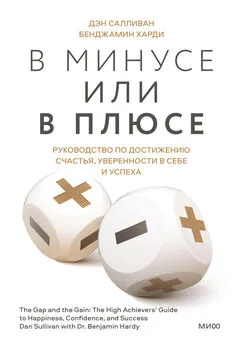Бен Уилсон - Метрополис. Город как величайшее достижение цивилизации
- Название:Метрополис. Город как величайшее достижение цивилизации
- Автор:
- Жанр:
- Издательство:Эксмо
- Год:2021
- Город:Москва
- ISBN:978-5-04-157333-1
- Рейтинг:
- Избранное:Добавить в избранное
-
Отзывы:
-
Ваша оценка:
Бен Уилсон - Метрополис. Город как величайшее достижение цивилизации краткое содержание
Британский историк Бен Уилсон, автор научных бестселлеров, расскажет удивительную историю города как явления. Совершив путешествие по знаменитым городам прошлого и настоящего, вы почувствуете силу и мощь городов, их влияние на историю человечества и цивилизацию в целом.
В формате PDF A4 сохранён издательский дизайн.
Метрополис. Город как величайшее достижение цивилизации - читать онлайн бесплатно ознакомительный отрывок
Интервал:
Закладка:
23
Jennifer Pournelle and Guillermo Algaze, ‘Travels in Edin: deltaic resilience and early urbanism in Greater Mesopotamia’, in H. Crawford (ed.), Preludes to Urbanism: studies in the late Chalcolithic of Mesopotamia in honour of Joan Oates (Oxford, 2010), pp. 7–34.
24
H. Weiss, ‘The origins of Tell Leilan and the conquest of space in third millennium north Mesopotamia’, in H. Weiss (ed.), The Origins of Cities in Dry-farming Syria and Mesopotamia in the Third Millennium BC (Guilford, CT, 1986).
25
Более 2400 километров.
26
Guillermo Algaze, ‘The Uruk expansion: cross-cultural exchange in early Mesopotamian civilisation’, Current Anthropology, 30:5 (December 1989), 581.
27
William Blake Tyrrell, ‘A note on Enkidu’s enchanted gate’, The Classical Outlook, 54:8 (April 1977), 88.
28
Guillermo Algaze, ‘Entropic Cities: the paradox of urbanism in ancient Mesopotamia’, Current Anthropology , 59:1 (February 2018); Florian Lederbogen et al., ‘City-Living and Urban Upbringing Affect Neural Social Stress Processing in Humans’, Nature , 474 (2011), 498–501; Leila Haddad et al., ‘Brain Structure Correlates of Urban Upbringing, an Environmental Risk Factor for Schizophrenia’, Schizophrenia Bulletin , 41:1 (January 2015), 115–22.
29
«Эпос о Гильгамеше». Пер. И. Дьяконова.
30
Leick, pp.1ff, 29.
31
Geoff Emberling and Leah Minc, ‘Ceramics and Long-Distance Trade in Early Mesopotamian States, Journal of Archaeological Science, Reports: 7, (March 2016); Giacomo Benati, ‘The Construction of Large-scale Networks in Late Chalcolithic Mesopotamia: emergent political institutions and their strategies’, in Davide Domenici and Nicolò Marchetti, Urbanized Landscapes in Early Syro-Mesopotamia and Prehispanic Mesoamerica (Wiesbaden, 2018).
32
В русском переводе «Эпоса», доступном в Сети, аналогичного отрывка не найдено.
33
Hans J. Nissen, Peter Damerow and Robert K. Englund, Archaic Bookkeeping: early writing and techniques of economic administration in the ancient Near East (Chicago, 1993), p. 36.
34
Leick, pp. 89ff.
35
То, что И. Дьяконов перевел как «Урук огражденный», в оригинале звучит «Урук-овчарня, загон для овец».
36
Ibid., p. 106.
37
Kriwaczek, p. 162.
38
Ibid., pp. 161–2.
39
Leick, pp. 139, 146, 268.
40
Наум. 3:1–3.
41
Быт. 11:4.
42
Быт. 11:7,9.
43
Jean-Jacques Rousseau, Politics and the Arts: letter to M. d’Alembert on the theatre , trans. A. Bloom (Ithaca, 1968), pp. 58–9.
44
Victoria E. Thompson, ‘Telling “Spatial Stories”: urban space and bourgeois identity in nineteenth-century Paris’, Journal of Modern History, 75:3 (September 2003), 542.
45
Jon Adams and Edmund Ramsden, ‘Rat Cities and Beehive Worlds: density and design in the modern city’, Comparative Studies in Society and History, 53:4 (October 2011), 722–756.
46
Le Corbusier, The City of Tomorrow and its Planning (NY, 1987), p. 244; Ebenezer Howard, Garden Cities of Tomorrow (London, 1902), p. 18.
47
Jonathan M. Kenoyer, Ancient Cities of the Indus Valley Civilisation (Oxford, 1998); R. K. Pruthi, Indus Civilisation (New Delhi, 2004); Andrew Robinson, The Indus: lost civilisations (London, 2015).
48
Asko Parpola, Deciphering the Indus Script (Cambridge, 1994), p. 21; cf. Dilip K. Chakrabarti (ed.), Indus Civilisation Sites in India: new discoveries (Mumbai, 2004), p. 11 and Hans J. Nissen, ‘Early Civilisations in the Near and Middle East’, in Michael Jansen, Máire Mulloy and Günter Urban (eds.), Forgotten Cities in the Indus: early civilisation in Pakistan from the 8th to the 2nd millennium BC (Mainz, 1991), p. 33.
49
Robinson, p. 47.
50
Liviu Giosan et al., ‘Fluvial landscapes of the Harappan civilization’, Proceedings of the National Academy of Sciences , 109:26 (2012); Peter D. Clift and Liviu Giosan, ‘Holocene evolution of rivers, climate and human societies in the Indus basin’, in Yijie Zhuang and Mark Altaweel (eds.), Water Societies and Technologies from Past and Present (London, 2018); Liviu Giosan et al., ‘Neoglacial Climate Anomalies and the Harappan Metamorphosis’, Climate of the Past , 14 (2018), 1669–86.
51
Cameron A. Petrie et al., ‘Adaptation to Variable Environments, Resilience to Climate Change: investigating land, water and settlement in Indus Northwest India’, Current Anthropology, 58:1 (February 2017), 1–30.
52
Arunima Kashyap and Steve Weber, ‘Starch Grain Analysis and Experiments Provide Insights into Harappan Cooking Practises’, in Shinu Anna Abraham, Praveena Gullapalli, Teresa P. Raczek and Uzma Z. Rizvi (eds.), Connections and Complexity: new approaches to the archaeology of South Asia (Walnut Creek, 2013); Andrew Lawler, ‘The Mystery of Curry’, Slate.com, 29/1/2013, https://slate.com/human-interest/2013/01/indus-civilization-food-how-scientists-are-figuring-out-what-curry-was-like-4500–years-ago.html.
53
Will Doig, ‘Science Fiction No More: The Perfect City is Under Construction’, Salon.com, 28/4/2012.
54
На 2019 год – 159 326 человек.
55
‘An Asian Hub in the Making’, New York Times, 30/12/2007.
56
William Thomas, The History of Italy (1549) (New York, 1963), p. 83.
57
Terry Castle, ‘Eros and liberty at the English masquerade’, Eighteenth-century Studies, 17:2 (Winter 1983–4), 159; Stephanie Dalley, Myths from Mesopotamia: Creation, The Flood, Gilgamesh, and others (Oxford, 1989), p. 305.
58
Откр. 18:18.
59
В русском синодальном переводе данный отрывок находится в «Послании Иеремии».
60
Иер. 1:43
61
Откр. 17:5.
62
Иер. 51:7.
63
Откр. 18:2–3.
64
Simon Szretre, ‘Treatment rates for the pox in early modern England: a comparative estimate of the prevalence of syphilis in the city of Chester and its rural vicinity in the 1770s’, Community and Change, 32:2 (2017); Maarten H. D. Larmuseau et al., ‘A Historical-Genetic Reconstruction of Human Extra-Pair Paternity’, Current Biology, 28:1–6 (December 2019).
65
Leick, pp. 59–60.
66
Хеймаркет – улица Лондона, в ту эпоху славилась как квартал «красных фонарей».
67
Стрэнд – одна из центральных улиц Лондона.
68
James Boswell, Boswell’s London Journal (1952), pp. 249–50, 257, 320.
69
Англ. Gropecunt можно перевести как «Мандощупательный», более мягкий вариант перевода подобрать трудно.
70
Farid Azfar, ‘Sodomites and the shameless urban future’, The Eighteenth Century, 55:4 (Winter 2014).
71
Randolph Trumbach, ‘London’s sodomites: homosexual behaviour and western culture in the eighteenth century’, Journal of Social History, 11:1 (Autumn 1977); Gavin Brown, ‘Listening to the queer maps of the city: gay men’s narratives of pleasure and danger in London’s East End’, Oral History, 29:1 (Spring 2001).
72
Leick, p. 59.
73
Vern L. Bullough, ‘Attitudes towards deviant sex in ancient Mesopotamia’, Journal of Sex Research, 7:3 (August 1971).
74
Иуд. 1:7.
75
19,8 метра.
76
Около 800 метров.
77
Leick, p. 264.
78
Иер. 50:39–40.
79
Brian Cowan, ‘What was masculine about the public sphere? Gender and the coffee house milieu in post-Restoration England’, History Workshop Journal, 51 (Spring 2001), 140.
80
Третий президент США (1801–1809), один из авторов Декларации независимости.
81
The Collected Writings of Thomas De Quincey, Vol. 1, p. 181.
82
Разновидность гравюры на металле; изображение создаеся за счет разной градации светлых участков на черном фоне.
83
Пер. В. Ефановой и Н. Мироновой.
84
H. Brock, ‘Le Corbusier Scans Gotham’s Towers’, New York Times, 3/11/1935; Le Corbusier, The Radiant City: elements of a doctrine of urbanism o be used as the basis of our Machine Age Civilization (London, 1967), p. 230.
85
‘Old Oligarch’, The Constitution of the Athenians, 2.7–8.
86
Demetra Kasimis, The Perpetual Immigrant and the Limits of Athenian Democracy (Cambridge, 2018), p. 22.
87
Ис. 23:7–8.
88
28,35 грамма.
89
Edith Hall, The Ancient Greeks: ten ways they shaped the modern world (London, 2016), introduction, chapter 3.
90
Ibid., chapter 3.
91
Morgens Herman Hansen, ‘The Hellenic Polis’, in Hansen (ed.), A Comparative Study of Thirty City-State Cultures: an investigation conducted by the Copenhagen Polis Centre (Copenhagen, 2000), pp. 141ff.
92
Ibid., pp. 146ff.
93
Ibid., p. 145.
94
Stavros Stavrides, ‘The December 2008 Youth Uprising in Athens: spatial justice in an emergent “city of thresholds”’, justice spatial , 2 (October 2010); Ursula Dmitriou, ‘Commons as Public: re-inventing public spaces in the centre of Athens’, in Melanie Dodd (ed.), Spatial Practices: modes of action and engagement with the city (Abingdon, 2020); Helena Smith, ‘Athens’ Unofficial Community Initiatives Offer Hope After Government Failures’, Guardian , 21/9/2016.
Читать дальшеИнтервал:
Закладка:
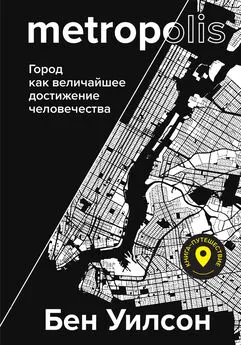

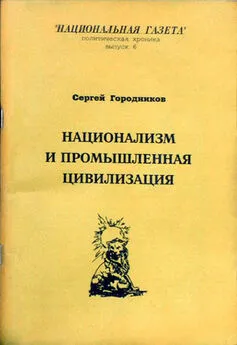
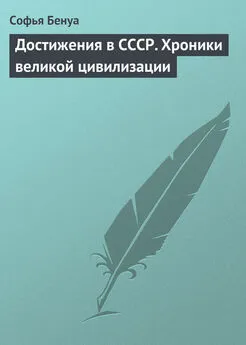
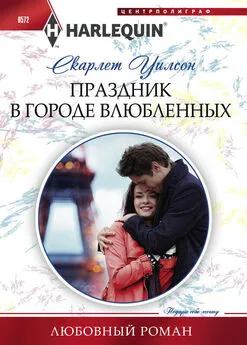
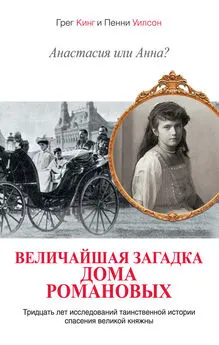
![Теа фон Харбоу - Метрополис. Индийская гробница [Романы]](/books/1096816/tea-fon-harbou-metropolis-indijskaya-grobnica-rom.webp)
